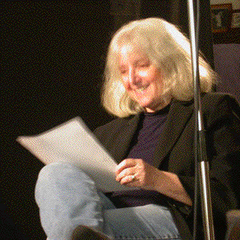The Weekly Review
Yesterday I finally did my first complete weekly review. The "Weekly Review" as its called by the GTD people, is a time set aside to empty inboxes, gather in one place and enter into a data base all those index cards, circa notebook items, Molskine notebook items, and misc data from my computer (that's yet another data "collection" point.) Then, I print out my calendars from last week and the two weeks ahead of me, print out my "next action" list that I keep on Vitalist (www.vitalist.com) , print out my "tickler list," the "waiting for list," topping this off with a complete list of projects. I keep my list of "maybe/someday" in Vitalist, as I like to review it weekly to see if there is anything I want to get too soon, or even now. With everything now in hard copy, I read through it all. This way I keep abreast of what I am supposed to be doing, what I am in fact doing, and what I don't want to be doing yet. I also followed Allen's 2 minute rule. When I ran into anything in my in-boxes that I could deal with (meaning actually do) in 2 minutes or less, I did it right then and there, as soon as I ran into it. By mid-day my office was about as organized and efficient as I have ever seen it. Its time for another picture, the "After" picture of my work space.
Now that I've done the weekly review thoroughly I think I can keep it up weekly. What stopped me until yesterday was the amount of "stuff" that had gathered in my two wooden "in-baskets." I was afraid of the "stuff." I started the review at 6AM which left me plenty of time, no matter how long it took. I followed David Allen's recommendation to deal with only 1 piece of paper at a time, and deal with it then and there (throw out, file in references, file in ticker file for dealing with later (whatever day I file it in, in the tickler file). As I went, I added next action items to lists on Vitalist so I wouldn't forget any piece of paper representing an activity that I put into the tickler, references, "to read" folder, etc. I am almost there, I almost have a mind like water, the promised outcome of following the GTD method of life organization.
The difference GTD has made in my life is astounding. After planning things for years, I am finally getting them done, even while spending much more time on the "defining" of work phase of my work process. I never thought I would enjoy organizing so much. Allen suggests keeping your inbox and next action lists attractive, and I have done this. When my to do list on Vitalist begins to look stale, with ambiguous items, or otherwise overwhelming, I freshen items up, delete them, throw them into the Maybe/Someday category. As those of you who read this blog know, it has taken from March 1st to now to really get into this process as thoroughly as I have --six months to carry out a thorough weekly review, in fact six months to really understand the week review, what it means, and that I can do it.
How can I take this into my clinical work and my teaching?
I am thinking about how I can bring this method into my clinical work, with clients or into my teaching when students don't ask for it? I have many clients who are upset about their lack of organization. I quietly mutter about GTD, but if they don't immediately pick up on it, I drop it. Most of my students in most of my classes and seminars over the years have struggled with poor organization skills. Last year I tried to bring GTD into my seminar and failed. The students simply weren't interested. School begins next week, maybe I'll give it another try. I think that implementing GTD, if only for the dissertation process, might yield terrific results. Since my seminar is for third year doctoral students who are beginning to work on their dissertations, I wish they'd give me a chance to teach them GTD. Its only by teaching does one really get to know anything, any skill, any area of knowledge. If I can be "doing GTD" anyone can and I'm ready to begin passing it on.
Subscribe to:
Post Comments (Atom)


1 comment:
Helping other to adopt methods like this is a challenge. In addition to realizing there's a need, folks have to be ready to commit to trying something that's a relatively radical change in their self-management. Big habit changes. I've found students life at school is a bit more structured, but grad students often have more of a life outside the department, as compared to undergrads.
Modeling is a good way to start, but this works better with peers. Possibly a short, focused introduction would be the best starting point.
Keep it up!
Post a Comment